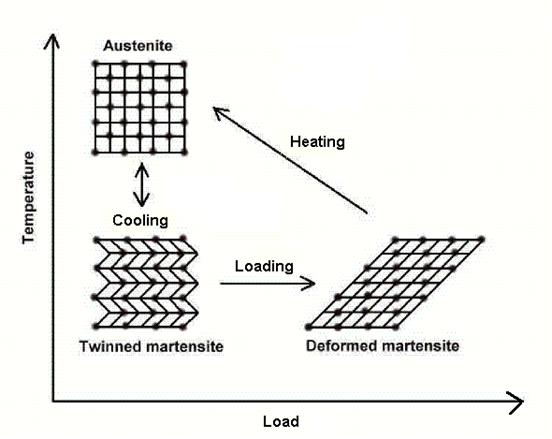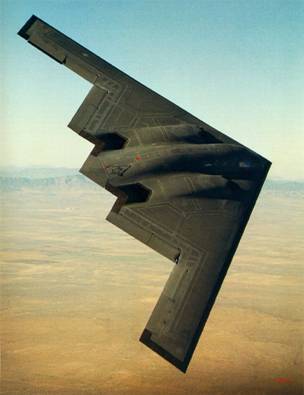





Published on Feb 14, 2025
Shape memory alloys (SMA's) are metals, which exhibit two very unique properties, pseudo-elasticity, and the shape memory effect. Arne Olander first observed these unusual properties in 1938 (Oksuta and Wayman 1998), but not until the 1960's were any serious research advances made in the field of shape memory alloys.
The most effective and widely used alloys include NiTi (Nickel - Titanium), CuZnAl, and CuAlNi. The two unique properties described above are made possible through a solid state phase change, that is a molecular rearrangement, which occurs in the shape memory alloy.
Typically when one thinks of a phase change a solid to liquid or liquid to gas change is the first idea that comes to mind. A solid state phase change is similar in that a molecular rearrangement is occurring, but the molecules remain closely packed so that the substance remains a solid. In most shape memory alloys, a temperature change of only about 10°C is necessary to initiate this phase change. The two phases, which occur in shape memory alloys, are Martensite, and Austenite.
After alloying and basic processing, SMAs can be formed into a shape(eg , a coil spring) and then set to that shape by a high heat treatment. When cooled , they may be bent, stretched or deformed(with in limits) and than with subsequent moderate heating (well below the heat setting temperature), they can recover some or all of the deformation. Shape memory alloys have found use in everything from space missions (pathfinder and many more) to floral arrangement (animated butterflies, dragon flies and fairies), from bio_medical applications, to actuators for miniature robots and cellphone antennas and even eyeglasses use SMA wires for their extreme flexibility.
The shape memory effect is observed when the temperature of a piece of shape memory alloy is cooled to below the temperature Mf. At this stage the alloy is completely composed of Martensite which can be easily deformed. After distorting the SMA the original shape can be recovered simply by heating the wire above the temperature Af.
The heat transferred to the wire is the power driving the molecular rearrangement of the alloy, similar to heat melting ice into water, but the alloy remains solid. The deformed Martensite is now transformed to the cubic Austenite phase, which is configured in the original shape of the wire.

The Shape memory effect is currently being implemented in:
• Coffepots
• The space shuttle
• Thermostats
• Vascular Stents
• Hydraulic Fittings (for Airplanes)
Pseudo-elasticity occurs in shape memory alloys when the alloy is completely composed of Austenite (temperature is greater than Af). Unlike the shape memory effect, pseudo-elasticity occurs without a change in temperature. The load on the shape memory alloy is increased until the Austenite becomes transformed into Martensite simply due to the loading; this process is shown in Figure 5. The loading is absorbed by the softer Martensite, but as soon as the loading is decreased the Martensite begins to transform back to Austenite since the temperature of the wire is still above Af, and the wire springs back to its original shape.
Some examples of applications in which pseudo-elasticity is used are:
• Eyeglass Frames
• Medical Tools
• Cellular Phone Antennae
The use of the one way shape memory or super elastic property of NiTi for a specific application requires a piece of SMA to be molded into the desired shape . the characteristic heat treatment is then done to set the specimen to its final shape . The heat treatment methods used to set shapes in both the shape memory and the super elastic forms of NiTi are similar. Adequate heat treatment parameters are needed to set the shape and properties of the item The two way memory training procedure can be made by SME training or SIM training .
In SME training the specimen is cooled below Mf and bent the desired shape . It is then heated to a temperature above Af and allowed freely to take its austenite shape . The procedure is repeated 20 – 30 times which completes the training . The sample now assumes its programmed shape upon cooling under Mf and to another shape when heated above Af In SIM (stress induced martensite ) training the specimen is bent just above Ms to produce the preferred variants of SIM and then cooled below Mf temperature. Upon subsequent heating above the Af temperature the specimen takes its original austenitic shape . This procedure is repeated 20-30 times
Aircraft maneuverability depends heavily on the movement of flaps found at the rear or trailing edge of the wings. The efficiency and reliability of operating these flaps is of critical importance. Most aircraft in the air today operate these flaps using extensive hydraulic systems. These hydraulic systems utilize large centralized pumps to maintain pressure, and hydraulic lines to distribute the pressure to the flap actuators. In order to maintain reliability of operation, multiple hydraulic lines must be run to each set of flaps. This complex system of pumps and lines is often relatively difficult and costly to maintain.
Many alternatives to the hydraulic systems are being explored by the aerospace industry. Among the most promising alternatives are piezoelectric fibers, electrostrictive ceramics, and shape memory alloys. The flaps on a wing generally have the same layout shown on the left, with a large hydraulic system attached to it at the point of the actuator connection. "Smart" wings, which incorporate shape memory alloys, are typically like the wing this system is much more compact and efficient, in that the shape memory wires only require an electric current for movement.

The many uses and applications of shape memory alloys ensure a bright future for these metals. Research is currently carried out at many robotics departments and materials science departments. With the innovative ideas for applications of SMAs and the number of products on the market using SMAs continually growing, advances in the field of shape memory alloys for use in many different fields of study seem very promising.
Future Applications There are many possible applications for SMAs. Future applications are envisioned to include engines in cars and airplanes and electrical generators utilizing the mechanical energy resulting from the shape transformations. Nitinol with its shape memory property is also envisioned for use as car frames. (Kauffman and Mayo, 7) Other possible automotive applications using SMA springs include engine cooling, carburetor and engine lubrication controls.
| Are you interested in this topic.Then mail to us immediately to get the full report.
email :- contactv2@gmail.com |